In the portable world of digital music, it seems that most people are happy with whatever setup they have – whether it’s a laptop, iPod or smart phone. Ironically, the most expensive device from this list also has the worst audio output: your computer. That laptop or desktop (iMAC, for instance) computer has about the cheapest soundcard available. And on that cheap soundcard sits an even cheaper digital audio converter or DAC, which is a necessary component to translate all those ones and zeros into an analog signal that you can physically hear through speakers or headphones. However, if your primary source of music is a computer, you can bypass the cheap internal DAC with a portable, external DAC. These DACs come in many different sizes, configurations and prices. Recently however, DACs have become smaller and easier to setup and use. It took Audioquest – an audio cable company – to raise the bar both in portability and audio quality with the DragonFly USB DAC + Preamp + Headphone Amp.
Before we get to the DragonFly’s pros and cons, permit me to explain what a DAC is and why you may need one.
Let’s assume you are not happy with how your music sounds and have two to three hundred bucks to improve the situation. How do you spend your money? That’s easy. If you’re still using those free buds that came with your iDevice, spend the money on a good pair of headphones, earphones, or desktop speakers. Any of those will give you more bang for your buck. But know this: after you’ve become accustomed to those headphones or speakers over time, your ears will become more discerning and you may begin to desire even more from your music. If so, then it’s time to consider getting an external DAC.
DACs go from the incredibly inexpensive – but very limited – HiFiMAN Express HM-101 all the way to desktop units costing thousands of dollars. And yet, they all basically do the same thing. As I said, even though soundcards in PCs, iPods and CD players already convert digital to analog, dedicated DACs do it better, sometimes much better and that results in improved audio quality. Incidentally, CD players, iPods and Smart phones usually have decent DACs, especially when compared to the computer versions. This review deals with computer use only.
Let’s begin with iTunes as an example of a music player app. A song directly ripped (transferred) in a CD’s native format (AIFF) into iTunes is a 16 bit/44 khz file. This simply means that for most people, this is more than decent audio that sounds great. However, this results in huge file sizes, so most music – using iTunes – is ripped in Apple Lossless (ALAC) or MP3 formats, which is a compressed format, meaning smaller-sized files that take up much less space on your hard drive. More space means more room for more songs. Here’s where it gets tricky: In order to compress a music file, information (some of it audible) is thrown away. This data trimming compromises the quality of the audio, but it’s seldom an issue when using free ear buds or laptop DACs because they don’t sound great no matter how good the source is.
If you may have purchased many songs and albums from iTunes. Those files are 256 kbps – kilobits per second. That may sound like a lot, but CDs are 1,411 kbps. This means that there is more than 5 times the amount of musical data on a CD than a song purchased through iTunes. It’s simple math. With decent speakers or headphones, you hear more detail in uncompressed music ripped from CDs. Once again, with a typical PC or laptop DAC outputting your music, you probably can’t hear the difference between a CD track and the lower resolution iTunes version.
A good DAC has one single purpose: To make sure you hear as much detail as possible from any music file, compressed or uncompressed.
Excuse my grossly over-simplified explanation, but I thought is was important to lay some ground work. Plus, The Gadgeteer is about gadgets and not audiophile jargon. So I’ll stop here. HDtracks, Computer Audiophile and Head-fi.org are all excellent sources for making sense of the sometimes confusing world of digital audio. However, if you must know the geeky specs, here they are:
- Plays All Music Files: MP3 up to 24-bit/192kHz
- Drives headphones directly
- Variable output drives powered speakers or power amp
- Fixed output feeds preamp or AV receiver
- 64-position (computer-controlled) analog volume control
- Asynchronous Class 1 USB data transfer
- Direct-coupled circuitry DAC chip through the analog volume control and analog output section
- Isolated Dual Master Clocks enable all sample rates to be ideally processed without conversion or rounding errors
- Output voltage: 2vrms
- Minimum driven impedance (headphones, electronic input): 12 ohms
- Maximum headphone driver output power: 125mW @ 32 ohms
- Analog Audio – Frequency Response:
- DC – 22 kHz (44.1kHz sample rate)
- DC – 24 kHz (48kHz sample rate)
- DC – 44 kHz (88.2kHz sample rate)
- DC – 48 kHz (96kHz sample rate)
By now, you may have determined that a DAC could be a solution to any musical shortcomings from your computer.
Until Audioquest came out with the DragonFly, portable DACs were no smaller than a deck of cards and required cumbersome wiring from either a power or USB cord. The people at Audioquest came up with a unique solution: They made a DAC that looks, acts and is the same size as a thumb drive. Not only that, but the DragonFly is one of the best portable DACs available, period. And it also includes a headphone amp!
Before I go on a gush-fest, let’s deal with what I do not like about the DragonFly. If you have an iMac or use the USB ports on a monitor, the DragonFly is almost hidden because those ports are located at the back of the monitor. That’s not a huge problem, but it makes the headphone port a bit awkward to use, since it sticks straight out and away from you. Audioquest was kind enough to supply a (very) short and flexible USB extension – called the DragonTail – so the DragonFly would hang down, making it much easier to connect and disconnect the mini plug. Also, the removable USB cap can easily be misplaced or lost. Well, that’s about it.
The DragonFly feels solid in construction. It is hard plastic encased in a non-slip rubberized coating. A lot of engineering went into the design and it shows. How Audioquest managed to fit all the necessary stuff into a thumb drive-sized DAC is amazing. There is a USB plug on one end and a headphone port at the opposite end. No on/off button and no volume knob are present. There is a lighted DragonFly window that displays different colors to tell you the sample rate of any particular song that’s playing: 44.1kHz (CD quality) – Green; 48kHz – Blue; 88.2kHz – Amber; 96kHz – Magenta (the higher the number, the better quality file). This is simplicity at its best.
The only accessory included is a stitched leather pocket-pouch with a dragonfly embossed into the leather. The DragonFly fits perfectly and will not accidentally fall out. I keep it in my backpack since it’s so small and weighs almost nothing. All you have to do is take the cap off, plug it into a USB port, and you’re ready.
Whether on a Mac or Windows PC, there is some initial setup to help the DragonFly perform at its best. It will work with iTunes and just about all the current music players available. If you use a player that can handle different sample rates on the fly – some require manual switching – that’s even better.
The DragonFly – or any other USB DAC – will not give you an OMG moment with your music. In the beginning, you should notice a modest improvement in audio quality. There will be more detail in the music – especially apparent in songs you know intimately. There will be a sharper aural focus with less muddiness in the sound. Bass will appear cleaner, as well. But none of this will make you slap your forehead wondering what took you so long to get it. The magic comes later. Use the DragonFly for a month or two; then disconnect it and listen to your music. You will be astounded how flat and dull it sounds. You may even hear the distortion that was always present but you never noticed before.
One of my favorite albums for testing DACs and headphones is “Sacred Treasures I – Choral Masterworks from Russia”. The sheer beauty and clarity of the a cappella choral singing will raise the hairs on your skin. But it will also buzz like a chainsaw on cheap equipment. The DragonFly cuts through the buzz and delivers what was recorded. It was only limited by the specs of the CD recording. Of course, good speakers and headphones will always sound better with or without the DragonFly, but the little DAC will unleash the speaker’s potential.
The Audioquest DragonFly can’t compete with higher-end DACs that can handle sampling rates in the stratosphere, with prices to match. That’s not its purpose. The DragonFly was designed to make music sound better without getting in the way. Maybe that’s why it has deservedly ended up on many “Best Of” lists. The Audioquest DragonFly is a game-changer.
USB C to 3.5mm Audio Adapter with Dual Chip CX31993 MAX97220 DAC & HiFi Amplifier, 8-Strand 4N Single Crystal Silver-Plated Copper Cable,USBC to Headphones Aux Dongle for Android iPhone PC Mac (Black)
$17.99 (as of January 4, 2026 14:50 GMT -06:00 - More infoProduct prices and availability are accurate as of the date/time indicated and are subject to change. Any price and availability information displayed on [relevant Amazon Site(s), as applicable] at the time of purchase will apply to the purchase of this product.)Fosi Audio K7 DAC Headphone Amp, Desktop USB C Digital to Analog Audio Converter for Workspace and Gaming PC PS5, Optical/Coaxial/Bluetooth aptX HD LL/Microphone Input, 3.5mm/4.4mm Balanced/RCA Output
$199.99 (as of January 4, 2026 14:50 GMT -06:00 - More infoProduct prices and availability are accurate as of the date/time indicated and are subject to change. Any price and availability information displayed on [relevant Amazon Site(s), as applicable] at the time of purchase will apply to the purchase of this product.)Product Information
| Price: | $250 US |
| Manufacturer: | Audioquest |
| Pros: |
|
| Cons: |
|

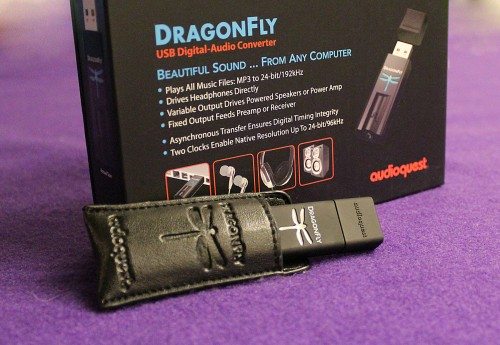
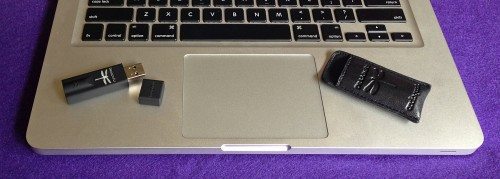
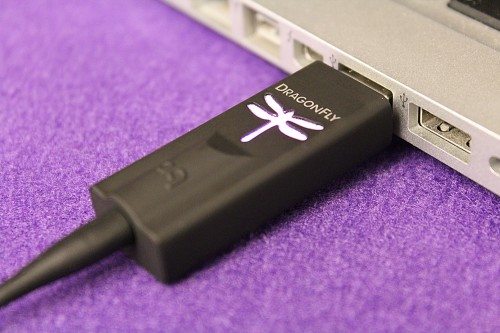
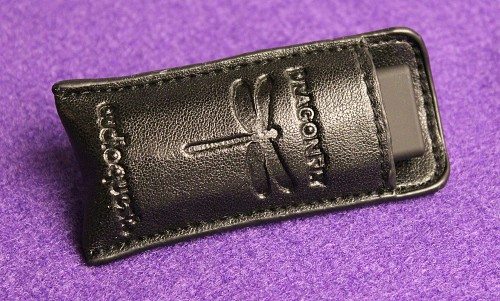
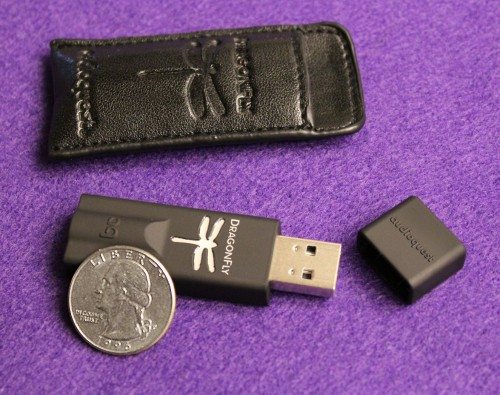
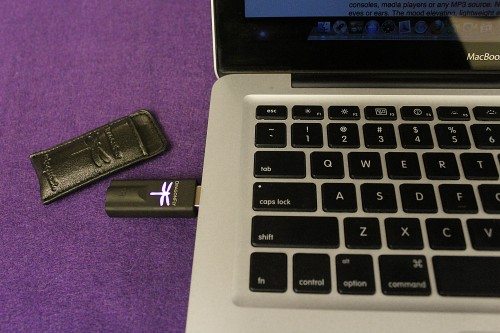


Gadgeteer Comment Policy - Please read before commenting
Hi! Forgive me if I’m being ignorant. I thought Apple stopped selling music coded with lossy AAC years ago. Hasn’t Apple lossless, aka ALAC been the standard ever since? Apple has made it easy to upgrade existing purchased music to the new lossless and DRM-free standard via iTunes Store for a reasonable price, which I did long ago.
That doesn’t do anything about the DAC in any device, of course, but my understanding is that there is no qualitative difference between AIFF and ALAC other than file size, which is significantly smaller with ALAC.
Brian,
You are absolutely correct. I said AAC, when I should have said ALAC. The correction has been made.
Thanks for pointing that out!
Bill H.
Do you know the best way to get uncompressed WAV or lossless compressed FLAC music from my computer to my SPDIF input on my receiver?
@Brian No, Apple doesn’t sell lossless music. The upgrade you are remembering was a bitrate bump from 128 kbps to 256, but they didn’t change the codec. These days everything on iTunes (including the matched songs in iCloud) is 256 kbps but it’s still AAC all the way.
Ah, right you are, Rob! My memory doesn’t always serve me right. The Apple Lossless Audio Codec can be used when ripping CDs onto the computer, and is, according to what I just now found on the Web, playable on iDevices and such, as well as the computer.
I guess it’s basically a question of storage size versus quallity for the user. I suspect, but do not know, that greedy record companies that finally agreed to let Apple sell DRM-free music via iTunes would not agree to the sale of CD-quality music. They’d be too self-protective, I imagine, and to full of it, as the idiom goes.
Brian, Rob, Rainer,
I appreciate the input. It’s great info and our readers learn a great deal from all the responses.
Regarding the DragonFly DAC review, I mostly listened to music files ripped over many years from CD. Since hard drive space has become much cheaper, I currently rip files exclusively in Apple Lossless.
Rainer, if you have a digital out on your computer, you can probably connect it to your S/PDIF input on your receiver. I’m on a 2011 iMac, and I simply connected an optical cable from the digital output on the back to my Boston Acoustics 5.1 amplifier. Works like a charm. I used the same optical cable that I had between this amplifier and my old DVD player.
Here’s a link to a discussion that might prove useful to you:
https://discussions.apple.com/thread/3122376?start=0&tstart=0
So I have a set of Klipsch s4 earbuds that I use for non travel use. I use a set of philips over the ear hooks for running about with my phone because I am rough on cables and don’t want to destroy my $80 (when I bought them) buds.
What I’m wondering is are the klipsch good enough for the dragonfly.
TonyW,
The Klipsch S4 were one of my first earphones, and I loved them.
What is your sound source… laptop, iMac, iPod…?
That will help determine how useful the DragonFly will be.
Bill H.
I am very interested in the Audioquest Dragonfly but I have also read fine reviews on Meridian’s Explorer and Director models. Can you tell me what the differences are (briefly)? Also, can I use any of these devices with my iPod Touch or only my computer (a MacBook Pro)? Thanks, in advance.
Skip T.
I have not heard either Meridian model, unfortunately. As you probably know, both are more expensive than the Dragonfly … and larger, also.
I use the Dragonfly every day at my office. It’s just so easy to carry around.
It won’t work with an iPod or Touch. They do not have USB ports.
V-Moda makes an amp/DAC that works with iPod and laptop: the Vamp Versa. It’s quite expensive, though.
http://v-moda.com/vamp/
Hi Bill,
Great review and comments. Thank you!
This may be the game changer. The DF1.2 is now 40% less. $149.
Hope this helps.
David Solomon
AudioQuest
This thing is a gimmick. If you’re seriously interested in good portable audio get a HiFi M8. It is both amp and DAC, and has its own battery. It even has a Lightning capable port so you can bypass the DAC on your iOS devices.
Majik,
The DragonFly DAC is not made for portable audio. It is for desktop or laptop use and not smartphone or DAP. In no way is it a gimmick. The audio improvement is well worth the cost, especially with an iMac.